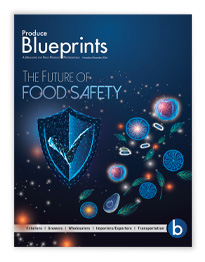While tariff reductions may pique exporter interest and raise already-slim margins on fruits and vegetables, just as important are TPP provisions that will improve the ease of exporting, says Richard Owen, vice president of global business development for the Produce Marketing Association. “Our members tell us that each (Pacific Rim) country has a different set of import regimes.”
The TPP not only brings uniformity to these import protocols, but makes long strides toward eliminating nontariff barriers such as permits, licenses, and tariff-rate quotas, as well as nonscientific restrictions in the areas of sanitary and phytosanitary measures and biotechnology.
ON THE TWO-YARD LINE
Congressional approval for fast-track paved the way for the next round of TPP negotiations, when the United States hosted trade ministers in Maui, last August. The deal was almost ready for a handshake, and many anticipated a 2015 finish. “Basically after Maui, they were at the two-yard line, ready to punch it in,” says Schott. But talks among the trade ministers hit a snag soon after, over automotive trade provisions. A handshake deal finally came in November and was the basis for President Obama to notify Congress that he intended to sign the TPP in at least 90 days.
Under the new fast-track terms, the TPP has to be posted at least 60 days before President Obama can sign the agreement. It is then up to Congress to approve the implementation legislation that will bring the TPP into effect in the United States. “The view around town here in Washington is that the implementing legislation will probably happen after Super Tuesday primaries, then you have a window between March and June for TPP to be finalized,” says Schott.
TARIFF REDUCTIONS
The tariff reductions under TPP have been long anticipated. Malaysia has a 5 percent tariff on fresh apples, cherries, and pears and Vietnam has a 10 percent tariff on those fruits, and even higher tariffs of 20 percent on U.S. oranges, lettuce, and potatoes. Reducing the tariffs, eventually to zero, will help exporters from the Americas gain valuable market share in Asia.
And then there’s Japan. Produce groups are closely watching possible reductions since Japan’s pre-TPP tariffs range from 12 to 24 percent on U.S.-supplied fruits. “If we could get that [tariff rate] down, it’s clearly of importance,” says Mark Powers, vice president at the Northwest Horticultural Council, which represents cherry, apple, and pear groups.
Discussion within the fresh produce industry has been positive. Peter De Young, president of Culinary Competitions International, which sends chefs to conventions and competitions worldwide to showcase fresh food and cuisine, says, “As a company that assists agricultural commodity boards and private brands in marketing their products, we understand how current trade barriers are preventing the consumption of our clients’ products. Eliminating tariffs will allow U.S. farmers the ability to do what they do best, for the greatest possible return.”



